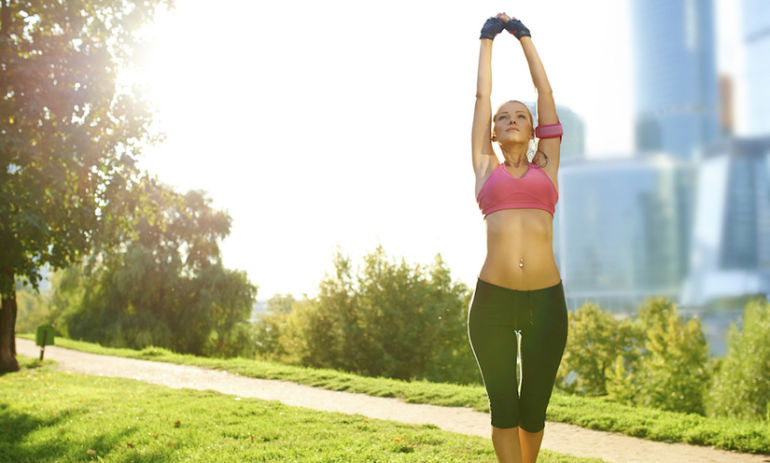
It’s no secret that we live in a society that loves to use smart marketing tactics to convince us to be loyal to a particular brand. In the fitness industry, these marketing tricks often use scary terminology like “bulking up” to sway us to choose one workout method exclusively over any other.
I'm a personal trainer and group fitness instructor, and I often hear clients with strong legs complain that their "thighs are bulky." Bulk is a term that is thrown around, often by women, and refers to a particular part of the body or muscle group becoming larger than desired in proportion to other parts of the body.
Yet when we consider the term "bulking," we are really describing what industry professionals often refer to as muscle imbalances. Meaning, bulking is often the result of the overdevelopment of a specific muscle, or set of muscles, in comparison to its surrounding muscle buddies. Think: My biceps are big and strong, but my shoulders are kind of puny in comparison.
So how do we avoid this? First of all, the old rule of using lighter weights with higher repetitions still reigns — so keep up the good work on that! Here are a few more super-simple tips to help steer you toward the path to the strong, long, lean physique of your dreams!
1. You have to believe you can do it.
This is where you have to stop blaming your genes. Sure, we aren’t all built like Gisele, but I guarantee there are many people in the world with your build AND a long, lean physique. Start by changing your mindset to believe you can make these physical changes happen.2. Roll it out!
Two words = FOAM ROLLER. When we work out, sometimes we get sore. In many ways that’s good, because the right kind of soreness means we are making positive changes in the body.At the same time, that “good soreness” is ALSO due to the occurrence of tiny tears in the muscle fibers that are caused by stressing the body (by doing exercises we aren’t used to, or lifting heavy weights). Those tiny tears mean we need to heal and repair the body. Repairing muscles creates a build-up of scar tissue, and scar tissue takes up space in the body — resulting in “bulking.”
You can help your body break down the scar tissue AND speed up muscle repair (rolling helps increase healing blood flow to the affected areas) by doing a bit of self-massage on a foam roller. You can do this before OR after your workout, but I personally prefer before because it breaks up any pre-workout stiffness and helps to warm up your muscles (remember that increased blood circulation I just mentioned?), which helps prevent injury.
3. Listen to YOUR body.
Many fitness classes are designed to deliver a total body workout and address all muscle groups. Sometimes that class might include a bunch of push-ups. Well, if your arms are dead tired from doing a bunch of push-ups the day before, don’t do the push-ups for that workout! You’ll just create more of that bulky scar tissue we talked about! (That being said, don’t do NOTHING — a plank is an excellent alternative to push-ups.)One big reason we bulk is because we overwork certain muscles and underwork the others! For example, if you take a spin class, which predominantly strengthens the thighs and the back of the butt, balance out your body by alternating with maybe a boxing class that focuses on the arms, or a dance class that works your entire body.
4. Prioritize stretching.
Stretching helps to train your muscle fibers to live in a more lengthened state. You might have heard of the term “muscle memory”? This applies to stretching as well. If we practice stretching after every workout, you not only relieve tension and tightness, but you simultaneously work to lengthen the muscle fibers and, through repetition, teach the muscle a new resting length. Just be sure to hold each stretch for at least 30 to 60 seconds!5. You are how you move!
I bet that as you're reading this, you're unconsciously scrunching your shoulders up into your ears. Let it go. See? Look how much longer your neck is!When performing any exercise, you should focus on working within your full range of motion. You must teach your muscles how you want them to exist in space. Quality of movement counts too. Slow down how quickly you perform each exercise. Try moving with a more fluid movement style. I am an equal opportunity fitness fanatic, but no matter what I am doing I ALWAYS have some form of yoga in my rotation. For me, the asana practice always brings me back into balance.
Think about it: Have you ever seen a “bulky” yogi? Sinewy? Yes! Muscular? Sure! Overweight? Yeah, sometimes. But bulky? NOPE.

